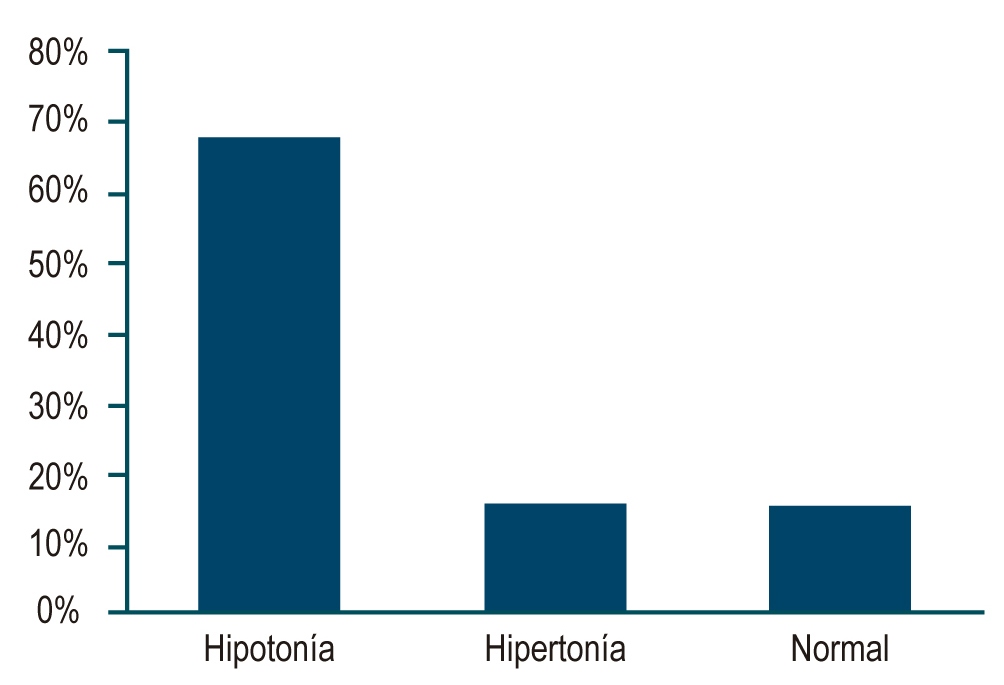Usefulness of Preoperative Anorectal Manometry for Ostomy Closure: A Cross-sectional Study
DOI:
https://doi.org/10.22516/25007440.1034Keywords:
Anorectal manometry, Colostomy, Fecal incontinence, Rectal diseases, OstomyAbstract
Introduction: For several reasons, a patient may be taken to a colostomy for closure as soon as possible. However, their treatment may vary, and predicting adequate continence after colostomy closure can be difficult. The objective is to characterize preoperative manometry because, in Colombia, few cases describe its usefulness.
Methods: A descriptive cross-sectional study of adult patients treated in two gastroenterology centers in Colombia between 2018 and 2020.
Results: Of 316 patients, 13 were indicated manometry before colostomy closure, predominantly women (69%), with an average age of 51.69 years (standard deviation: 24.18). When evaluating the basal pressures of the anal sphincter, we noted 68% hypotonia, 16% hypertonia, and 16% normal pressures. The voluntary contraction test was abnormal in 25%, and a pattern of dyssynergic defecation was observed in 30%, all with type III patterns. The inhibitory rectoanal reflex was present in 92%, with an abnormal balloon expulsion test in 100% of patients. More than 70% of patients persisted with the colostomy in situ after the first year of construction and 30% beyond 36 months.
Conclusions: The present study posits questions about the cost-effectiveness of anorectal manometry before colostomy closure, which requires corroboration by studies with more patients and more robust methodological designs.
Downloads
References
Lee TH, Bharucha AE. How to Perform and Interpret a High-resolution Anorectal Manometry Test. J Neurogastroenterol Motil. 2016;22(1):46-59. https://doi.org/10.5056/jnm15168
Ryoo SB, Oh HK, Ha HK, Han EC, Kwon YH, Song I, et al. Outcomes of surgical treatments for rectovaginal fistula and prognostic factors for successful closure: a single-center tertiary hospital experiences. Ann Surg Treat Res. 2019;97(3):149-156. https://doi.org/10.4174/astr.2019.97.3.149
Farhat W, Azzaza M, Mizouni A, Ammar H, Ben Ltaifa M, Lagha S, Kahloul M, Gupta R, Mabrouk MB, Ali AB. Factors predicting recurrence after curative resection for rectal cancer: a 16-year study. World J Surg Oncol. 2019;17(1):173. https://doi.org/10.1186/s12957-019-1718-1
Engida A, Ayelign T, Mahteme B, Aida T, Abreham B. Types and Indications of Colostomy and Determinants of Outcomes of Patients After Surgery. Ethiop J Health Sci. 2016;26(2):117-20. https://doi.org/10.4314/ejhs.v26i2.5
Azpiroz F, Bouin M, Camilleri M, Mayer EA, Poitras P, Serra J, Spiller RC. Mechanisms of hypersensitivity in IBS and functional disorders. Neurogastroenterol Motil. 2007;19(1 Suppl):62-88. https://doi.org/10.1111/j.1365-2982.2006.00875.x
Aljorfi AA, Alkhamis AH. A Systematic Review of Early versus Late Closure of Loop Ileostomy. Surg Res Pract. 2020: 9876527. https://doi.org/10.1155/2020/9876527
Bharucha AE, Basilisco G, Malcolm A, Lee TH, Hoy MB, Scott SM, Rao SSC. Review of the indications, methods, and clinical utility of anorectal manometry and the rectal balloon expulsion test. Neurogastroenterol Motil 2022;34(9):e14335. https://doi.org/10.1111/nmo.14335
Ciriza-de-los-Ríos C, Mínguez M, Remes-Troche JMLG. Manometría anorrectal de alta resolución y de alta definición: redescubriendo la función anorrectal. Rev Esp Enferm Dig. 2018;110(12):794-805. https://doi.org/10.17235/reed.2018.5705/2018
Rao SS, Mudipalli RS, Stessman M, Zimmerman B. Investigation of the utility of colorectal function tests and Rome II criteria in dyssynergic defecation (Anismus). Neurogastroenterol Motil. 2004;16(5):589-96. https://doi.org/10.1111/j.1365-2982.2004.00526.x
Bharucha AE, Dunivan G, Goode PS, Lukacz ES, Markland AD, Matthews CA, et al. Epidemiology, pathophysiology, and classification of fecal incontinence: state of the science summary for the National Institute of Diabetes and Digestive and Kidney Diseases (NIDDK) workshop. Am J Gastroenterol. 2015;110(1):127-36. https://doi.org/10.1038/ajg.2014.396
Bjoern MX, Perdawood SK. Manometric assessment of anorectal function after transanal total mesorectal excision. Tech Coloproctol. 2020;24(3):231-236. https://doi.org/10.1007/s10151-020-02147-3
Topal U, Eray IC, Rencuzogullari A, Dalci K, Yalav O, Alabaz O. The effect of anorectal manometric examination on the surgical treatment plan in chronic anal fissure. Ann Ital Chir. 2021;92:59-63.
Fox M, Markopoulos K, Flückiger M. Anorektale Funktionsdiagnostik [Investigations of Anorectal Function]. Ther Umsch. 2021;78(9):513-521. https://doi.org/10.1024/0040-5930/a001304
Ciriza-de-Los-Ríos C, Ruiz-de-León-San-Juan A, Díaz-Rubio García M, Tomás-Moros E, García-Durán F, Muñoz-Yagüe T, et al. Differences in the pressures of canal anal and rectal sensitivity in patients with fecal incontinence, chronic constipation and healthy subjects. Rev Esp Enferm Dig. 2010;102(12):683-90. https://doi.org/10.4321/S1130-01082010001200002
Fukui R, Nozawa H, Hirata Y, Kawai K, Hata K, Tanaka T, et al. Low preoperative maximum squeezing pressure evaluated by anorectal manometry is a risk factor for non-reversal of diverting stoma. Langenbecks Arch Surg. 2021;406(1):131-139. https://doi.org/10.1007/s00423-020-02011-w
Norton C, Cody JD. Biofeedback and/or sphincter exercises for the treatment of faecal incontinence in adults. Cochrane Database Syst Rev. 2012;(7):CD002111. https://doi.org/10.1002/14651858.CD002111.pub3
Cho HM, Kim H, Yoo R, Kim G, Kye BH. Effect of Biofeedback Therapy during Temporary Stoma Period in Rectal Cancer Patients: A Prospective Randomized Trial. J Clin Med. 2021;10(21):5172. https://doi.org/10.3390/jcm10215172
Heinrich H, Misselwitz B. High-Resolution Anorectal Manometry - New Insights in the Diagnostic Assessment of Functional Anorectal Disorders. Visc Med 2018;34(2):134-39. https://doi.org/10.1159/000488611

Downloads
Published
How to Cite
Issue
Section
License
Copyright (c) 2024 Revista colombiana de Gastroenterología

This work is licensed under a Creative Commons Attribution-NonCommercial-NoDerivatives 4.0 International License.
Aquellos autores/as que tengan publicaciones con esta revista, aceptan los términos siguientes:
Los autores/as ceden sus derechos de autor y garantizarán a la revista el derecho de primera publicación de su obra, el cuál estará simultáneamente sujeto a la Licencia de reconocimiento de Creative Commons que permite a terceros compartir la obra siempre que se indique su autor y su primera publicación en esta revista.
Los contenidos están protegidos bajo una licencia de Creative Commons Reconocimiento-NoComercial-SinObraDerivada 4.0 Internacional.


| Article metrics | |
|---|---|
| Abstract views | |
| Galley vies | |
| PDF Views | |
| HTML views | |
| Other views | |














